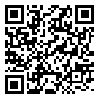BibTeX | RIS | EndNote | Medlars | ProCite | Reference Manager | RefWorks
Send citation to:
URL: http://bcn.iums.ac.ir/article-1-299-en.html

 , Akram Najafi-Abedi1
, Akram Najafi-Abedi1 
 , Fatemeh Jafari1
, Fatemeh Jafari1 
 , Farshid Javid1
, Farshid Javid1 
 , Mohsen Pirpiran1
, Mohsen Pirpiran1 
 , Mohammad-Reza Memar-Jafari1
, Mohammad-Reza Memar-Jafari1 
 , Seyed Ali Mousavi-Khosravi1
, Seyed Ali Mousavi-Khosravi1 
 , Mohammad Rahimzadeh-Behzadi1
, Mohammad Rahimzadeh-Behzadi1 
 , Mina Ranjbaran1
, Mina Ranjbaran1 
 , Hedayat Sahraei *1
, Hedayat Sahraei *1 

Introduction: Depression is one of the most frequent psychiatric disorders in the world with occurs with higher incidence in women. In the present study, the effect of water-alcoholic extract of Papaver rhoeas L. on forced swimming test (FST) in Swiss-Webster mice were examined.
Methods: We used Swiss-Webster mice (20-25 g) to execute FST on them. The plant extract (1, 10, 30, and 100 mg/kg) was injected to the animals 30 minutes before each session. Fluoxetine (20 mg/kg) was used as standard antidepressant drug. In another group of animals, 30 minutes after extract administration, blood samples were taken from retro-orbital sinus for corticosterone assay. Yet in third group, the drugs were injected to the animals and 30 minutes later, their activities were tested in an open field apparatus.
Results: Our experiments showed that the extract efficiently reduced FST time both in male and female mice dose-dependently. This effect was comparable with fluoxetine. In addition, corticosterone assay indicated that plasma corticosterone in animals which received extract was higher than those amounts in fluoxetine and saline controls. Moreover, the animals did not show any motor activity deficit in all doses of the extract and fluoxetine compared to saline control.
Conclusion: The extract of Papaver rhoeas can reduce immobility time which is comparable to the effect of fluoxetine. Also the effect of the extract is contrary to its effects on plasma corticosterone level and or animals’ activity.
Received: 2015/04/5 | Accepted: 2015/10/21 | Published: 2016/07/1
| Rights and permissions | |
 |
This work is licensed under a Creative Commons Attribution-NonCommercial 4.0 International License. |





